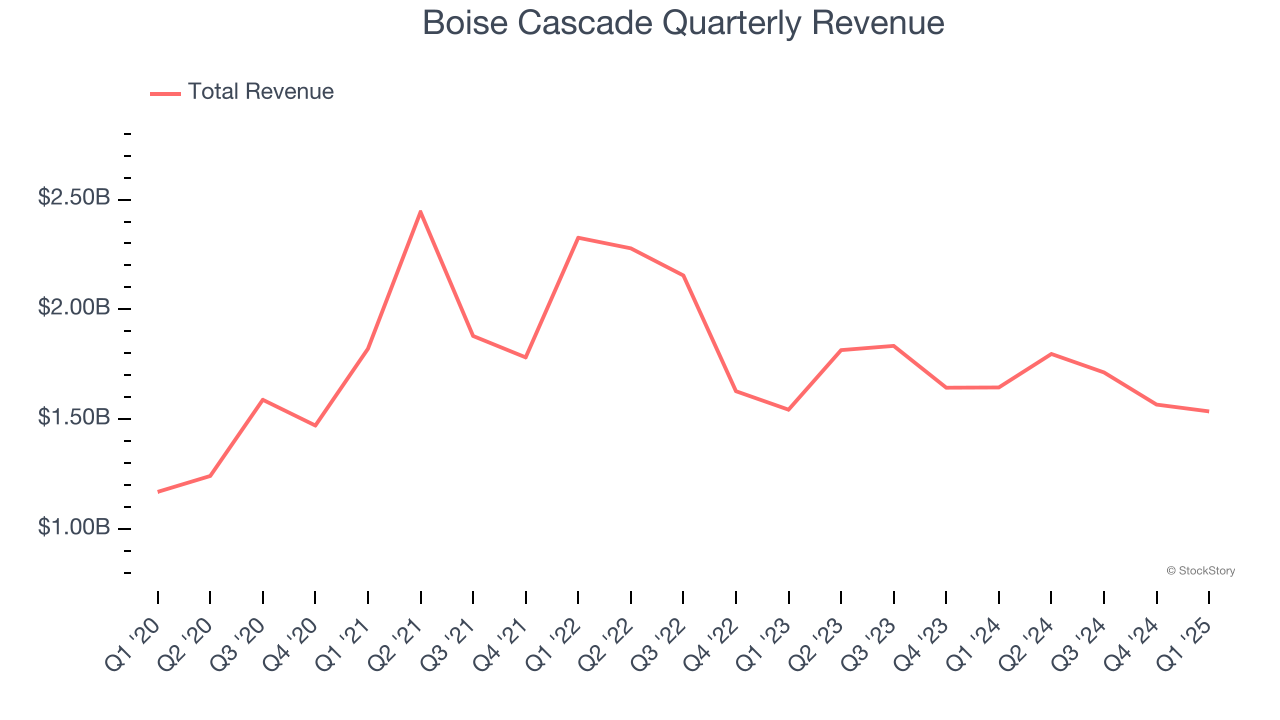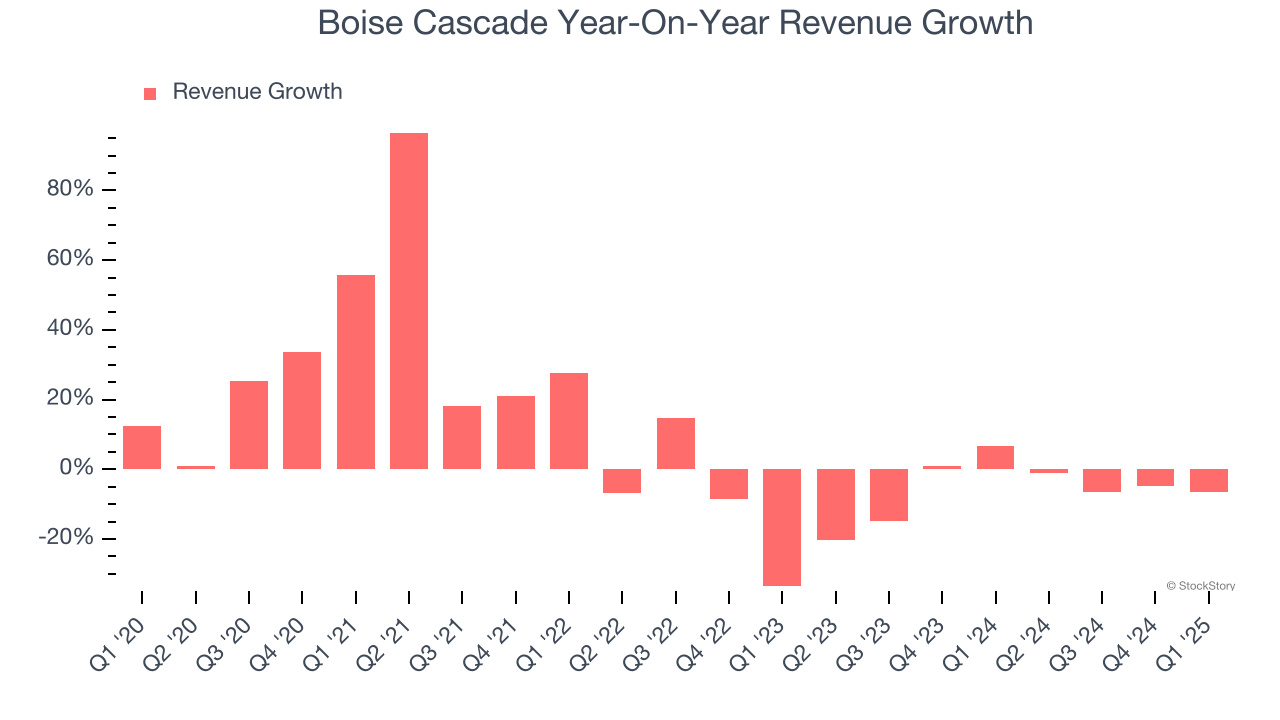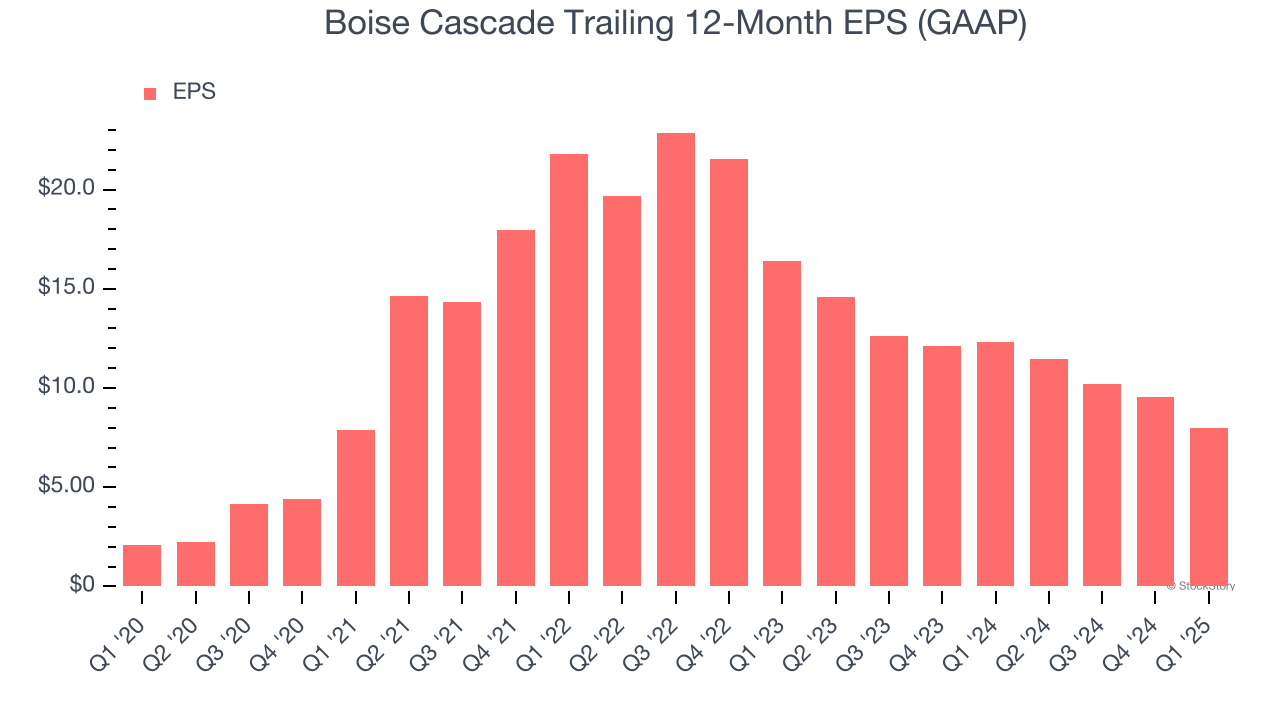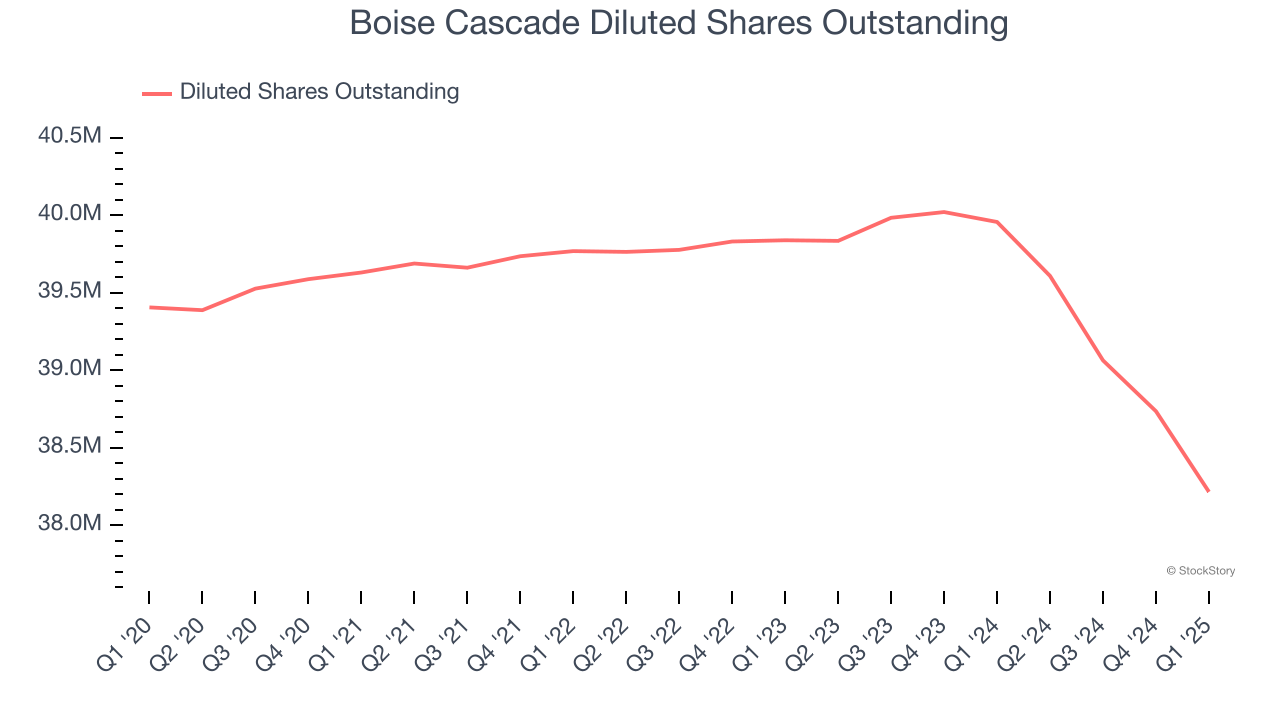
Building products company Boise Cascade Company (NYSE:BCC) reported Q1 CY2025 results exceeding the market’s revenue expectations, but sales fell by 6.6% year on year to $1.54 billion. Its GAAP profit of $1.06 per share was 19.7% below analysts’ consensus estimates.
Is now the time to buy Boise Cascade? Find out by accessing our full research report, it’s free.
Boise Cascade (BCC) Q1 CY2025 Highlights:
- Revenue: $1.54 billion vs analyst estimates of $1.51 billion (6.6% year-on-year decline, 1.6% beat)
- EPS (GAAP): $1.06 vs analyst expectations of $1.32 (19.7% miss)
- Adjusted EBITDA: $91.61 million vs analyst estimates of $102.1 million (6% margin, 10.3% miss)
- Operating Margin: 3.5%, down from 8.1% in the same quarter last year
- Free Cash Flow was -$81.68 million compared to -$6.87 million in the same quarter last year
- Market Capitalization: $3.66 billion
Company Overview
Formed through the merger of two lumber companies, Boise Cascade Company (NYSE:BCC) manufactures and distributes wood products and other building materials.
Sales Growth
A company’s long-term sales performance is one signal of its overall quality. Any business can experience short-term success, but top-performing ones enjoy sustained growth for years. Regrettably, Boise Cascade’s sales grew at a mediocre 6.8% compounded annual growth rate over the last five years. This fell short of our benchmark for the industrials sector and is a tough starting point for our analysis.

Long-term growth is the most important, but within industrials, a half-decade historical view may miss new industry trends or demand cycles. Boise Cascade’s performance shows it grew in the past but relinquished its gains over the last two years, as its revenue fell by 6.7% annually. 
We can dig further into the company’s revenue dynamics by analyzing its most important segments, Building Material Distribution and Wood products, which are 91.6% and 27.1% of revenue. Over the last two years, Boise Cascade’s Building Material Distribution revenue (plywood, siding, insulation) averaged 5.1% year-on-year declines while its Wood products revenue (lumber and beams) averaged 4.9% declines.
This quarter, Boise Cascade’s revenue fell by 6.6% year on year to $1.54 billion but beat Wall Street’s estimates by 1.6%.
Looking ahead, sell-side analysts expect revenue to grow 2.9% over the next 12 months. Although this projection implies its newer products and services will fuel better top-line performance, it is still below the sector average.
Unless you’ve been living under a rock, it should be obvious by now that generative AI is going to have a huge impact on how large corporations do business. While Nvidia and AMD are trading close to all-time highs, we prefer a lesser-known (but still profitable) stock benefiting from the rise of AI. Click here to access our free report one of our favorites growth stories.
Operating Margin
Boise Cascade has managed its cost base well over the last five years. It demonstrated solid profitability for an industrials business, producing an average operating margin of 10.1%. This result was particularly impressive because of its low gross margin, which is mostly a factor of what it sells and takes huge shifts to move meaningfully. Companies have more control over their operating margins, and it’s a show of well-managed operations if they’re high when gross margins are low.
Analyzing the trend in its profitability, Boise Cascade’s operating margin decreased by 2.2 percentage points over the last five years. This raises questions about the company’s expense base because its revenue growth should have given it leverage on its fixed costs, resulting in better economies of scale and profitability.

In Q1, Boise Cascade generated an operating profit margin of 3.5%, down 4.5 percentage points year on year. Since Boise Cascade’s operating margin decreased more than its gross margin, we can assume it was less efficient because expenses such as marketing, R&D, and administrative overhead increased.
Earnings Per Share
We track the long-term change in earnings per share (EPS) for the same reason as long-term revenue growth. Compared to revenue, however, EPS highlights whether a company’s growth is profitable.
Boise Cascade’s EPS grew at an astounding 30.9% compounded annual growth rate over the last five years, higher than its 6.8% annualized revenue growth. However, this alone doesn’t tell us much about its business quality because its operating margin didn’t expand.

We can take a deeper look into Boise Cascade’s earnings to better understand the drivers of its performance. A five-year view shows that Boise Cascade has repurchased its stock, shrinking its share count by 3%. This tells us its EPS outperformed its revenue not because of increased operational efficiency but financial engineering, as buybacks boost per share earnings. 
Like with revenue, we analyze EPS over a more recent period because it can provide insight into an emerging theme or development for the business.
For Boise Cascade, its two-year annual EPS declines of 30.1% mark a reversal from its (seemingly) healthy five-year trend. We hope Boise Cascade can return to earnings growth in the future.
In Q1, Boise Cascade reported EPS at $1.06, down from $2.61 in the same quarter last year. This print missed analysts’ estimates, but we care more about long-term EPS growth than short-term movements. Over the next 12 months, Wall Street expects Boise Cascade’s full-year EPS of $8.00 to grow 6%.
Key Takeaways from Boise Cascade’s Q1 Results
It was encouraging to see Boise Cascade beat analysts’ revenue expectations this quarter. On the other hand, its EPS and EBITDA fell short of Wall Street’s estimates. Overall, this was a softer quarter. The stock remained flat at $92 immediately following the results.
The latest quarter from Boise Cascade’s wasn’t that good. One earnings report doesn’t define a company’s quality, though, so let’s explore whether the stock is a buy at the current price. When making that decision, it’s important to consider its valuation, business qualities, as well as what has happened in the latest quarter. We cover that in our actionable full research report which you can read here, it’s free.
